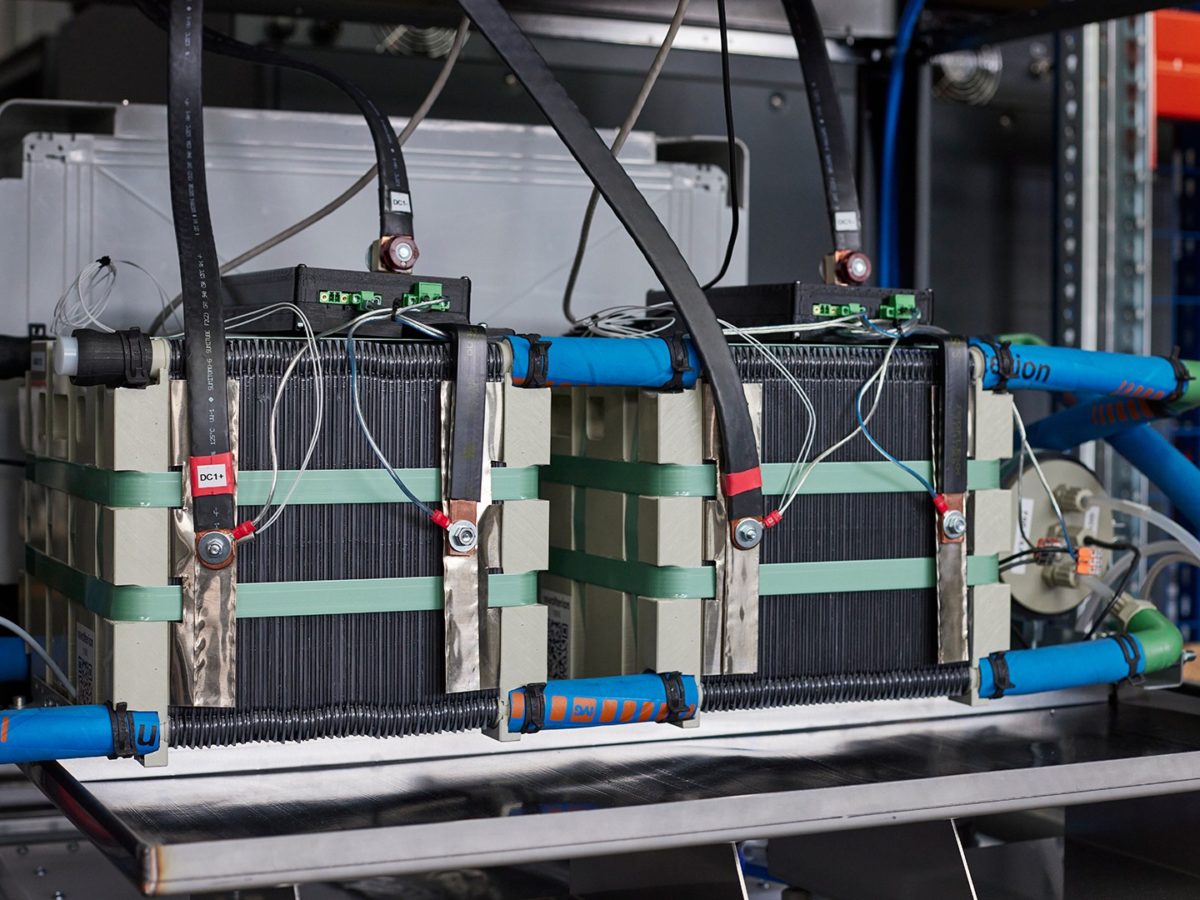L R AS Published on Sunday 9 May 2021 - n° 361 - Categories:R&D
In brief R&D: redox flow battery, new electrolyte, recycling rare earths, new solar cell, anode-free battery

In brief R&D: redox flow battery, new electrolyte, recycling rare earths, new solar cell, anode-free battery
Scientists at Fraunhofer Umsicht have redesigned the redox flow battery.
They managed to reduce its weight by 80% using a powder-roll process, the cost of materials by 40% and its size by half. They used an electrically conductive plastic so that it remained flexible and could be welded.
https://www.pv-magazine.com/2021/05/07/new-stack-design-for-cheaper-redox-flow-batteries/
*
British scientists have developed an electrolyte that improves the performance of lithium-oxygen batteries and reduces dendrite formation.
https://www.pv-magazine.com/2021/05/07/new-electrolyte-boosts-lithium-air-batteries/
*
Raw materials supplier American Resources Corporation has developed a technology to recycle rare earth metals such as neodymium (Nd), praseodymium (Pr) and dysprosium (Dy) contained in lithium-ion batteries at the end of their life cycle.

The technique is a two-zone ligand-assisted displacement chromatography (LAD). It is capable of producing metals in high yields with a purity of over 99%. It is based on zone fractionation. Its overall production capacity could exceed 100 kg of rare earth elements per m3 per day.
https://www.pv-magazine.com/2021/05/07/recycling-rare-earth-elements-in-dead-lithium-batteries/
*
Researchers at KAUST University in Saudi Arabia have fabricated a mixed cation perovskite solar cell based on an absorbing layer a few microns thick composed of perovskite single crystals. An inverted perovskite cell, with a "p-i-n" arrangement between an upper electron transport layer and a lower hole transport layer, achieved an efficiency of 22.8
https://www.pv-magazine.com/2021/05/06/inverted-perovskite-solar-cell-with-22-8-efficiency/
*
US scientists have developed an anode-less sodium-ion battery, which retained 99.93% of its initial capacity per cycle. Many of the stability problems were eliminated by using "pure" alkali metals in the batteries, by carefully reducing the water content of the liquid electrolyte.
https://www.pv-magazine.com/2021/05/05/a-stable-sodium-battery-without-the-anode/




